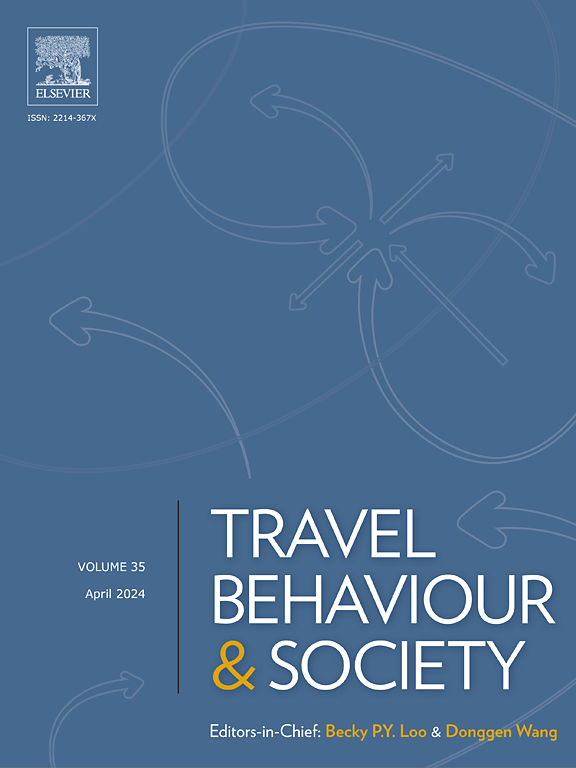影响残疾人采用下一代交通技术的关键因素
IF 5.7
2区 工程技术
Q1 TRANSPORTATION
引用次数: 0
摘要
交通技术不断发展的前景为增强残疾人的行动能力提供了巨大的潜力。然而,新兴交通方式的采用,如自动驾驶汽车(AVs)和微型交通选择,受到众多因素的影响。本研究在占总人口24%的英国残疾人群体的背景下调查了这些因素。我们采用多参与的方法,包括8个焦点小组,共有51名参与者,研究了不同残疾人士对8种新型出行方式的偏好和采用模式。本文章由计算机程序翻译,如有差异,请以英文原文为准。
Key factors influencing adoption of next-generation transportation technologies among people with disabilities
The evolving landscape of transportation technology holds significant potential for enhancing mobility for people with disabilities. However, the adoption of emerging transportation modes, such as autonomous vehicles (AVs), and micromobility options, is influenced by a plethora of factors. This study investigates these factors within the context of the United Kingdom’s disability community, accounting for about 24% of the total population. Using a multi-engagement approach, including 8 focus groups with 51 participants, we examined the preferences and adoption patterns for 8 new mobility modes among people with diverse disabilities.
Focusing on the impact of attitudinal barriers stemming from participation accessibility, the study explores how these barriers influence the willingness of people with disabilities to adopt and use emerging technologies in transport. Through these sessions, the study unveiled a profound difficulty in comprehending new transport technologies among participants, resulting from their limited exposure to these concepts. This lack of familiarity significantly influenced their attitudes towards usage, with perceived control and safety emerging as major concerns in evaluating if the choice is limited to awareness.
The results also indicate clear distinctions in transportation choices based on specific disability types and socio-economic factors. AV remote taxis and AV taxis emerged as preferred modes for those with mobility issues and anxiety disorders, respectively, emphasizing the need for stress-free and convenient travel. Gender and location significantly influenced adoption rates, with males and urban residents demonstrating a higher inclination towards autonomous transportation modes. Age and marital status also played roles in adoption behaviour, indicating varying acceptance levels across different demographic groups. A significant portion of participants cited apprehension about safety during boarding and alighting, and concerns over financial constraints for AV private cars.
Despite these barriers, the appeal of increased mobility and virtual assistance contributed to the overall interest in emerging transportation technologies. AV taxis emerged as the most preferred choice among those experiencing stress and general social anxiety, indicating a desire for comfort and relaxation during transit. Vision, speech, learning, hearing, and mobility impairments appeared as crucial factors influencing the adoption of AV taxis.
Our study underscores the importance of addressing these nuanced needs and ensuring that new mobility technologies are designed with inclusivity and accessibility in mind. At the end of our study, we provide detailed recommendations for creating accessible and user-friendly features for future transport solutions for people with various physical and mental health disabilities. These insights can guide stakeholders in developing transportation solutions that contribute to a more equitable and accessible transportation system for vulnerable communities such as those with disabilities.
求助全文
通过发布文献求助,成功后即可免费获取论文全文。
去求助
来源期刊

Travel Behaviour and Society
TRANSPORTATION-
CiteScore
9.80
自引率
7.70%
发文量
109
期刊介绍:
Travel Behaviour and Society is an interdisciplinary journal publishing high-quality original papers which report leading edge research in theories, methodologies and applications concerning transportation issues and challenges which involve the social and spatial dimensions. In particular, it provides a discussion forum for major research in travel behaviour, transportation infrastructure, transportation and environmental issues, mobility and social sustainability, transportation geographic information systems (TGIS), transportation and quality of life, transportation data collection and analysis, etc.
 求助内容:
求助内容: 应助结果提醒方式:
应助结果提醒方式:


